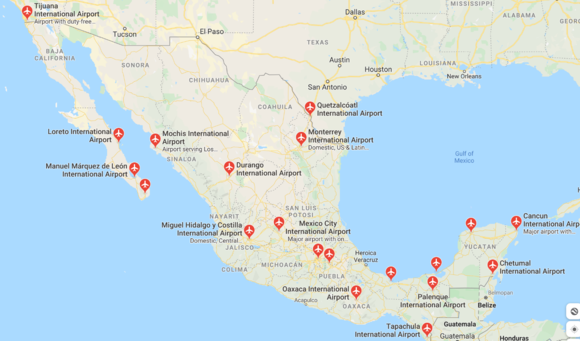News
News
Mexico Reopening Status


The following information regarding Mexico's reopening status is from Manny Aviation, a full-service handling company based in Mexico:
New European CPDLC Mandate .. and the exemptions

Beginning 5 February 2020, a new data link requirement goes into effect in the Single European Sky airspace. This new mandate requires aircraft to be equipped with CPDLC ATN-VDL Mode 2 (Aeronautical Telecommunications Network Very High Frequency Data Link Mode 2).
Mexico Inspections Go Nuclear on International Aircraft


We have told you in the past about the escalation of ramp inspections in Mexico over the past year. There have been several interesting developments over the past few months that have made this topic go from a nuisance to a full-blown operational concern going forward.
The following has been published by Manny Aviation, an established ground handler in Mexico.
“Civil Aviation Authority in Mexico (fka DGAC) has changed its name to AFAC (Civil Aviation Federal Agency) as of October 16th. As part of its change, part of broader overhaul authorities are undergoing, some departments within the agency have changed the way they operate and some procedures are being modified.
Unfortunately, it is yet too soon to brief you accurately on specific changes. Moreover, some changes might be overturned in the end due to its lack of practical application. What we can share with you so far is the following:
Read more: Mexico Inspections Go Nuclear on International Aircraft
Strategic Lateral Offset Procedure changes with Nat Doc 007 v.2019-3

In a continuous effort to mitigate the risk of traffic conflict caused by non-normal events (i.e. aircraft navigation errors, height deviation errors and turbulence induced altitude-keeping errors), arrives an amendment to SLOP within the release of NAT Doc 007 v.2019-3. With the density of traffic only increasing in the NAT, provisions needed to be made that would further reduce the risk of conflict when leaving an assigned track.
Read more: Strategic Lateral Offset Procedure changes with Nat Doc 007 v.2019-3
Articles
- Winter and Cold-Weather Procedures
- Revised Mexico APIS Requirements
- EES Implementation Start Date
- Santa Maria FIR Radio Initial Voice Contact Trial
- CZQX OCR Procedure Update
- Mitigating Flight Plan vs. Clearance Errors
- Comprehensive Ramp Inspection Program implemented in Mexico
- OCR Gander Update
- The Importance of Following Annex 6 Fuel Guidance
- Oceanic Clearance Removal Procedures
